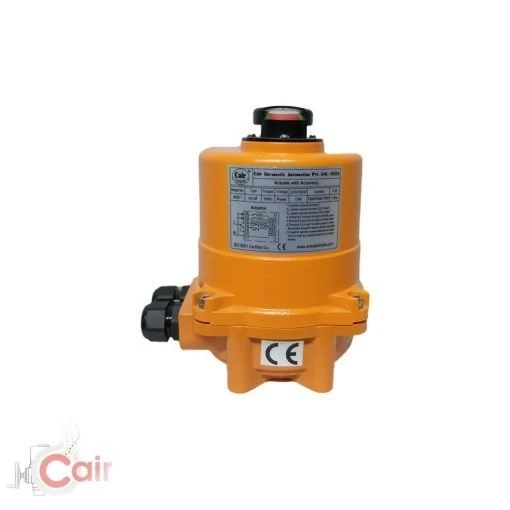What is a Motorized Valve?
Using an electric motor, a motorized valve opens or closes its mechanism. In applications such as aircraft deicing, irrigation, and automated fire suppression, this type of valve is ideally suited for large valve types or remote fluid control applications. A gate valve, ball valve, and butterfly valve are among the most commonly used types of valve for motorized applications. As well as remote flow control applications, motorized valves can also be used for incremental valve operation. Motorized valves have similar internal fluid control mechanisms as their manual counterparts; only the inputs for actuating the valve differ.
From the garden hose to hydroelectric power generation systems, valves play an integral role in fluid flow circuits. In some cases, valve actuation presents logistical challenges when valves are too large to open or close by hand, are located in remote, inaccessible locations, or operate during periods when plants or installations are unmanned. Motorized valves are the solution to these problems, with the exception of being used by an electric motor, this type of valve functions exactly the same as a manual variety. The valve can be operated remotely by an operator or automatically by an automated system.
For motorized valves to open or close, an electric motor drives an advanced mechanism through a gear train. Depending on the type of valve, the advanced mechanism varies. Gate or sluice valves typically use a lead screw mechanism to lift or lower the gate plate, and they are commonly found in larger systems like water mains. A screw advance mechanism also controls the fluid flow in high-precision metering applications using globe valves.
With the fastest actuation times, rotary or quarter turn motorized valves use a cam or central spindle advance mechanism. Ball and butterfly valves are among the most common types of motorized valves. Even though these valves are not suitable for flow control, they have the best sealing characteristics of all valve types. Typically, they are used on high-pressure fuel lines and on aircraft deicing systems.
Motorized valves are generally identical to manual valves of the same type internally. Motors and gear trains are the only physical differences between the two. A set of electrical limits prevents motorized valve mechanisms from advancing too far by cutting the motor supply when the valve is fully opened or closed. A new adjustment is simply made by reversing the motor's direction to turn the valve in the opposite direction.
What are the Best Motorized Valves in the Market?
Motorized valves are used for controlling the flow of fluid in pipes. They can be used for various purposes such as regulating the flow of water and gas, providing pressure relief, and preventing backflow.
The best motorized valve manufacturers in India are:
Cair Euromatic Automation Pvt Ltd FRL Valves Pvt Ltd Dhanraj EnterpriseWhat Is a Motorized Actuator?
A motorized actuator is a mechanical device that converts the rotary motion of an electric motor into linear motion. Among the applications of these devices are large ventilator shutters, conveyor chute diverters, and tiny, ultra-precise optical stages in telescopes and camera lenses. Transmission or conversion of the motor's rotary output is generally facilitated by gear trains. A motorized actuator generates linear motion by using limit switches or stepper motors that are very accurate. According to the application, the motorized actuator can generate its output in a single plane, two dimensions, or three dimensions.
In terms of work-producing machines, electric motors are among the best. Although they are relatively small, they are robust and reliable, with stepper motor technology allowing very accurate rotational control. The challenge with any motor is converting rotary motion into linear work in many applications. A motorized actuator is one of the most common solutions to this problem. With a rack-and-pinion gear train, for example, the rotational motion of the motor can be translated into a straight-line output.
A motorized actuator can be contained in a surprisingly small package, making it ideal for compact applications such as auto-focus and motorized zoom cameras. Furthermore, this type of motion conversion also takes advantage of the mechanical advantages inherent in gear drives, which enable a relatively small actuator to generate considerable leverage. Combined with the precision possible with stepper control, motorized actuators are used in a wide range of applications, from optical devices to large industrial chutes and conveyor diverters.
It is also possible for the motorized actuator to produce its linear output in multiple planes. Some are simple and move a device in a straight line, while more complex types can move multiple stages or work platforms along additional XY and XYZ planes. Typically, these devices are used in precision-machining applications where tool posts or workpieces rotate extensively. In these units, each axis platform has its own motor drive and gearbox. Electrically controlled stepper motors or mechanical limit switches control the movement or output of the motorized actuator.
We Cair Euromatic Automation Pvt. Ltd. are the core motorized actuator manufacturer, supplier, and exporter.


